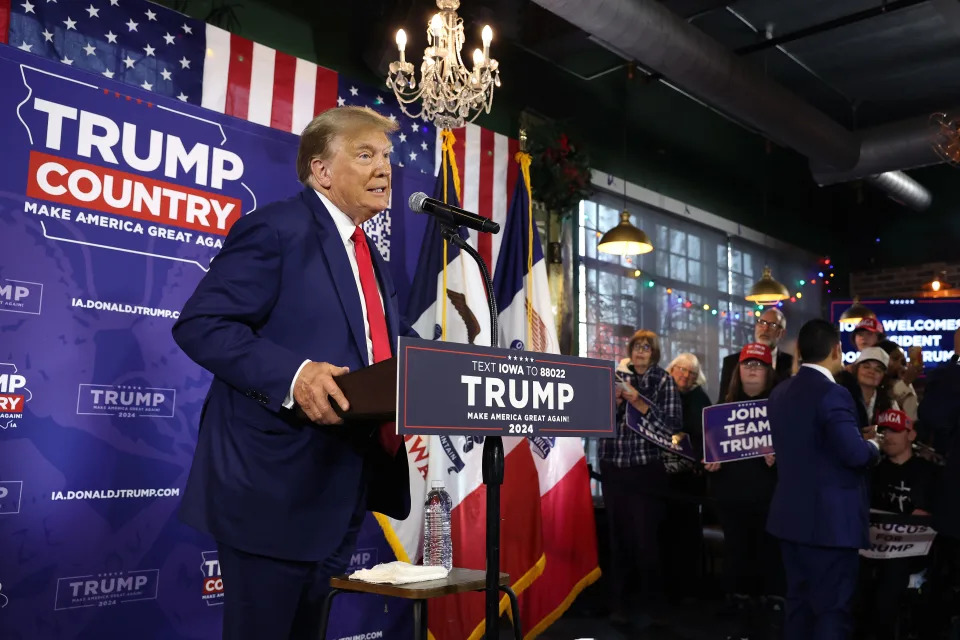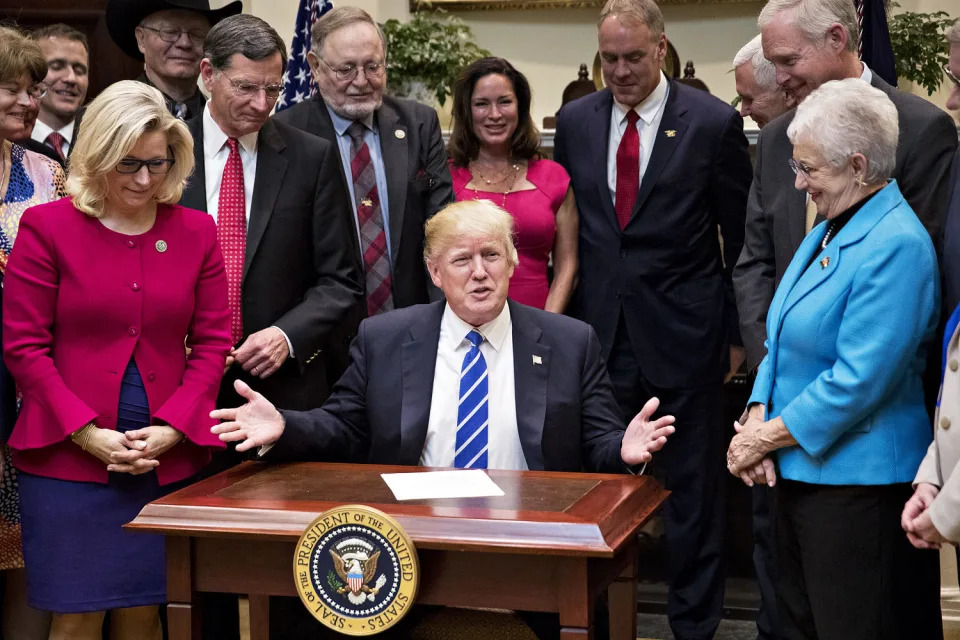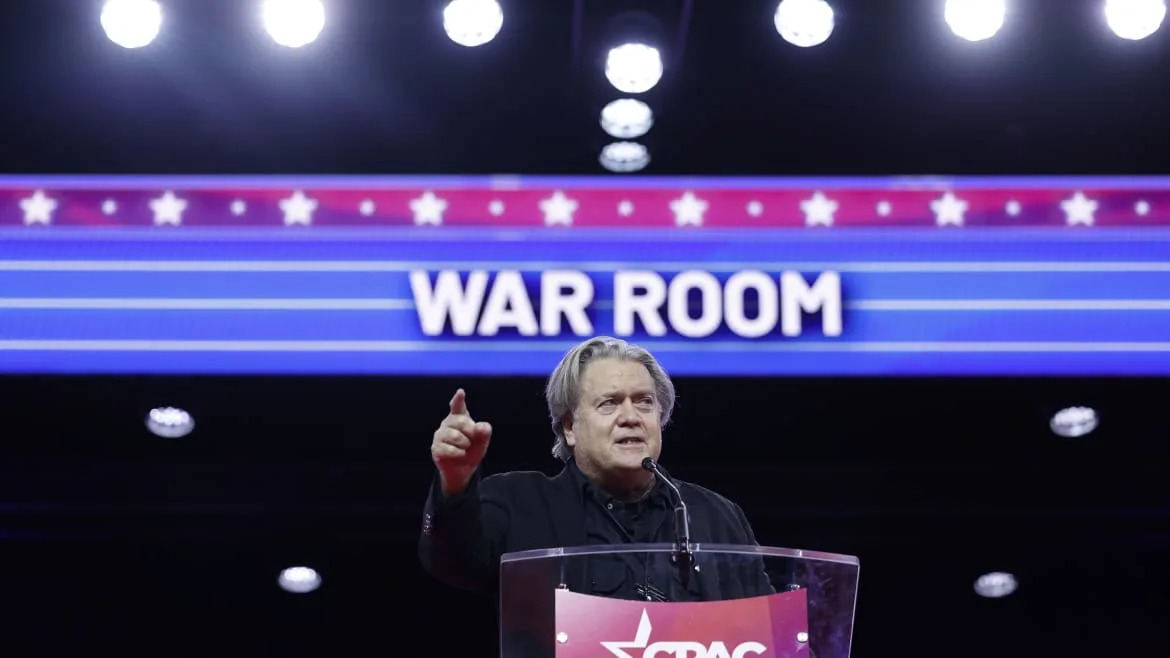CBS News
14th Amendment challenge to Trump’s eligibility heads to Colorado Supreme Court
Melissa Quinn – December 6, 2023

Washington — A closely watched legal fight that aims to keep former President Donald Trump off the ballot in Colorado under a rarely invoked provision of the 14th Amendment is set to come under review by the state’s supreme court on Wednesday.
The challenge to Trump’s candidacy in Colorado is just one in a nationwide fight underway in courts across more than a dozen states. Those arguing against Trump say he is disqualified from holding federal office again under Section 3 of the 14th Amendment because of his conduct surrounding the Jan. 6, 2021, attack on the U.S. Capitol.
The provision says those who engaged in insurrection against the Constitution after swearing an oath to support it cannot hold federal or state office. While enacted after the Civil War and designed to exclude former Confederate civil and military officials from future office, the so-called disqualification clause has now been invoked to target Trump’s candidacy.
The question of Trump’s eligibility is widely expected to land before the U.S. Supreme Court, but it will face a major test when the seven members of Colorado’s Supreme Court consider a bid from voters to keep Trump off the state’s presidential primary ballot. Secretary of State Jena Griswold has until Jan. 5 to certify the candidates for Colorado’s March 5 primary, and Trump is leading the field of candidates vying for the Republican presidential nomination.
The Colorado Supreme Court is holding oral arguments in the case at 3 p.m. ET on Wednesday, or 1 p.m. local time. The proceedings will be streamed live on CBS News in the player above.
The Colorado lawsuit

The four Republican and two unaffiliated voters in Colorado filed their lawsuit against Griswold and Trump in September, arguing the former president is disqualified from public office under Section 3. The voters asked a state trial court in Denver to block Griswold from taking any action that would allow Trump access to the ballot.
Following a five-day hearing, Judge Sarah Wallace concluded that the Jan. 6 assault was an insurrection against the Constitution, and found that Trump engaged in insurrection — the first time a court has made such a finding about the former president’s conduct regarding Jan. 6. But the judge found that Trump was not disqualified under Section 3 because the clause does not apply to those who took only the presidential oath and does not prevent those who engaged in insurrection from becoming president.
Section 3 of the 14th Amendment states:
No person shall be a Senator or Representative in Congress, or elector of President and Vice-President, or hold any office, civil or military, under the United States, or under any State, who, having previously taken an oath, as a member of Congress, or as an officer of the United States, or as a member of any State legislature, or as an executive or judicial officer of any State, to support the Constitution of the United States, shall have engaged in insurrection or rebellion against the same, or given aid or comfort to the enemies thereof. But Congress may by a vote of two-thirds of each House, remove such disability.
Wallace’s ruling rested on her finding that the president is not an “officer of the United States,” as cited in Section 3. She said the president’s oath to “preserve, protect, and defend the Constitution” differs from an oath to “support” the Constitution, as specified in the provision. As a result, she ordered Griswold to place Trump on the state’s GOP presidential primary ballot.
The group of voters challenging Trump’s candidacy and the former president both appealed to the Colorado Supreme Court. The voters argued that Section 3 covers the president and presidential oath. Trump pushed back on the findings involving the events of Jan. 6, among other matters.
In a filing with the state high court, lawyers for the voters said that excluding the president from the provision in the 14th Amendment “would make no sense.”
“There would be no reason to prohibit insurrectionists from serving as mere presidential electors, and from holding every other office in the land, while allowing them to hold the most powerful and hence most dangerous office,” they argued. “Nor would there be any reason to allow insurrectionist former presidents to hold office again, while excluding former low-level state officers.”
The former president challenged several aspects of Wallace’s decision. His legal team claimed that the trial court lacked jurisdiction to consider the case because Section 3 is not self-executing and could only be enforced through an act of Congress. Trump’s lawyers also argued that his speech on Jan. 6 was protected under the First Amendment and asserted that states cannot create and enforce an additional qualification for a candidate to be elected president.
“The framers excluded the office of President from Section Three purposefully,” his lawyers told the state supreme court. “Section Three does not apply, because the presidency is not an office ‘under the United States,’ the president is not an ‘officer of the United States,’ and President Trump did not take an oath ‘to support the Constitution of the United States.'”
The case, Trump’s legal team said, is about whether Republicans and unaffiliated voters in Colorado can be denied their right to vote for the former president. They warned that candidate access to the ballot affects the constitutional rights of not only those running, but also that of voters to cast their ballots effectively.
Griswold, who was sued in her capacity as Colorado’s chief election official, has not taken a position on whether Trump should be listed on the ballot. But in a filing with Colorado’s high court, lawyers for the state said the secretary’s “overriding concern” is that Colorado courts and election officials remain empowered to ensure the integrity of the ballot.
“Electoral chaos”
If Trump’s argument that state courts don’t have jurisdiction to hear the constitutional claim under state election law is accepted, it would hinder the ability of the state and courts to exclude candidates from the ballot who are disqualified from holding office, Colorado Attorney General Phil Weiser wrote.
The former president’s assertion “would render ballots nothing more than vehicles for political party expression with the State unable to exclude even candidates who do not meet the age, residency, or nationality requirements for office,” Weiser argued. “This radical interpretation would undermine Colorado’s interests in ballot integrity and ensuring that all Colorado voters can cast ballots for eligible candidates.”
Supporting Trump in the case is a group of 19 GOP-led states, who said in a friend-of-the-court brief that the question of the former president’s eligibility under the 14th Amendment demands a “single, national answer.”
“Electoral chaos would ensue if a presidential candidate, whose eligibility is governed by a single set of constitutional requirements, is eligible to appear on some States’ ballots but not others,” officials for the states said in their filing.
They argued that questions about the so-called insurrection clause are left to Congress, and said the case raises a political question that cannot be decided by the courts.
At least two courts, a state court in Michigan and federal district court in New Hampshire, have already dismissed cases seeking to exclude Trump from their states’ presidential primary ballots because they raised political questions that courts were barred from adjudicating. A group of Michigan voters has appealed the decision from the court of appeals and asked the state supreme court to step in.
In Minnesota, the state supreme court dismissed a lawsuit that sought to bar Trump from the primary ballot under Section 3. But the court said in its ruling that voters challenging his candidacy could return after the state’s primary election on March 5 and pursue a case over the general election.









